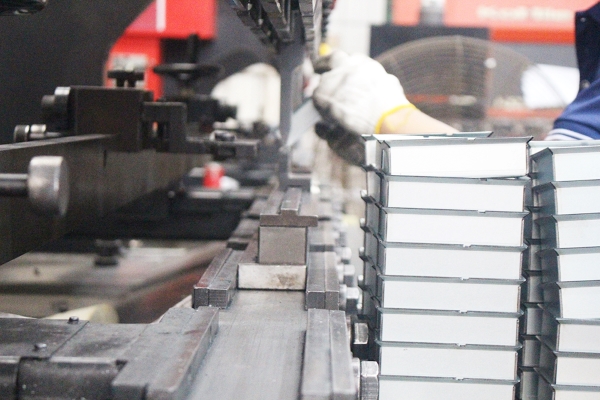Stamping is a forming processing method that relies on stamping equipment and molds to apply external force to plates, strips, pipes and profiles to cause plastic deformation or separation, thereby obtaining workpieces (stamping parts) of the required shape and size. There is still a certain gap between stamping equipment companies and the world's first-class manufacturers in terms of technology, brand and financial strength. While facing greater competitive pressure, there are also huge opportunities. Some companies have differentiated competitive advantages in terms of localized service advantages, response speed and cost-effectiveness. As their scale continues to grow, their technologies continue to mature, and their soft power such as brands and services continue to improve, outstanding companies will gain wider market survival. and development space. The development trends of the stamping equipment industry are as follows:
High speed and compound combination
Improving productivity is an eternal pursuit. All forging manufacturers are committed to the research of high-speed forging machinery. High speed, high stiffness and high precision are the three most important characteristics of high-speed presses. They must be considered together and one of them is indispensable. While pursuing high-speed processing, it is also necessary to shorten the production auxiliary time as much as possible to achieve good technical and economic benefits. The CNC press is equipped with a three-axis loading and unloading device driven by a servo motor, which enables the stamping center to achieve efficient plate processing.
Compounding several processes or several processes on one machine tool is an important technical way for various types of machine tools to significantly reduce production auxiliary time and improve productivity. It has also been successfully applied to forging machinery, and the effect is very significant. For example: Germany, the United States, and Japan have successively developed laser one-step punching compound machines, which organically combine mold punching and laser cutting. The workpiece can be punched, punched, flanged, shallow stretched, and cut in one load. It can save auxiliary time to the maximum extent by waiting for multiple processes, and is especially suitable for processing panel workpieces with multiple and complex hole shapes and processing multiple varieties of small-batch sheet metal.
Stamping equipment control system integration
How to be more flexible is one of the important challenges facing stamping products to adapt to the requirements of "production in time". Stamping equipment users require that all control functions of the equipment be integrated to achieve large-scale management of the entire set of molds. The integration of the stamping equipment control system can realize various control functions of all presses and molds through a single operating interface, including fault diagnosis, mold configuration, programmable limit switches and mold monitoring adjustments, etc., and facilitate the maintenance of the equipment. It is more convenient and significantly increases the effective working time of the press.
Fieldbus technology with on-site communication network, on-site device interconnection, interactive operability, decentralized functional modules, and open interconnection network is the development direction of punch control technology and has a clear and promoting effect on the realization of automation.
Environmental protection
For example, on CNC turret presses, flexible nylon brush supports are commonly used on the worktable instead of traditional ball supports to reduce noise pollution; variable-speed presses achieve rapid descent, slow-speed punching of workpieces, and rapid return, greatly reducing vibration and noise. . Especially in the European market, the ISO14000 series of standards have been basically implemented, and stamping equipment must pass CE certification.


